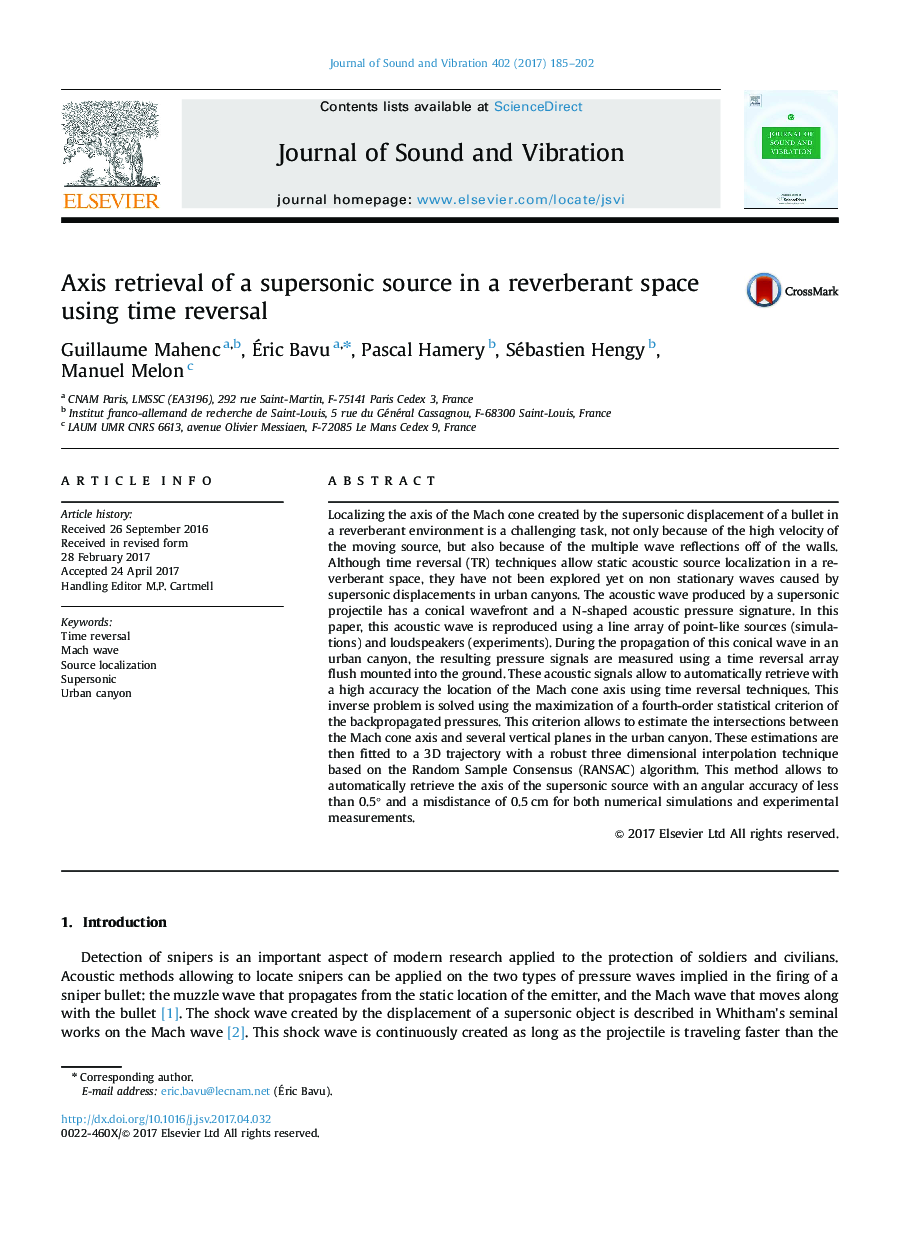| کد مقاله | کد نشریه | سال انتشار | مقاله انگلیسی | نسخه تمام متن |
|---|---|---|---|---|
| 4924148 | 1430831 | 2017 | 18 صفحه PDF | دانلود رایگان |
عنوان انگلیسی مقاله ISI
Axis retrieval of a supersonic source in a reverberant space using time reversal
ترجمه فارسی عنوان
بازیابی محور یک منبع صوت بادی در یک فضای ریندرند با استفاده از چرخش زمان
دانلود مقاله + سفارش ترجمه
دانلود مقاله ISI انگلیسی
رایگان برای ایرانیان
کلمات کلیدی
معکوس کردن زمان، موج مچ، محلی سازی منبع، فوق العاده موسیقی کانی شهری،
موضوعات مرتبط
مهندسی و علوم پایه
سایر رشته های مهندسی
مهندسی عمران و سازه
چکیده انگلیسی
Localizing the axis of the Mach cone created by the supersonic displacement of a bullet in a reverberant environment is a challenging task, not only because of the high velocity of the moving source, but also because of the multiple wave reflections off of the walls. Although time reversal (TR) techniques allow static acoustic source localization in a reverberant space, they have not been explored yet on non stationary waves caused by supersonic displacements in urban canyons. The acoustic wave produced by a supersonic projectile has a conical wavefront and a N-shaped acoustic pressure signature. In this paper, this acoustic wave is reproduced using a line array of point-like sources (simulations) and loudspeakers (experiments). During the propagation of this conical wave in an urban canyon, the resulting pressure signals are measured using a time reversal array flush mounted into the ground. These acoustic signals allow to automatically retrieve with a high accuracy the location of the Mach cone axis using time reversal techniques. This inverse problem is solved using the maximization of a fourth-order statistical criterion of the backpropagated pressures. This criterion allows to estimate the intersections between the Mach cone axis and several vertical planes in the urban canyon. These estimations are then fitted to a 3D trajectory with a robust three dimensional interpolation technique based on the Random Sample Consensus (RANSAC) algorithm. This method allows to automatically retrieve the axis of the supersonic source with an angular accuracy of less than 0.5° and a misdistance of 0.5 cm for both numerical simulations and experimental measurements.
ناشر
Database: Elsevier - ScienceDirect (ساینس دایرکت)
Journal: Journal of Sound and Vibration - Volume 402, 18 August 2017, Pages 185-202
Journal: Journal of Sound and Vibration - Volume 402, 18 August 2017, Pages 185-202
نویسندگان
Guillaume Mahenc, Ãric Bavu Ãric Bavu, Pascal Hamery, Sébastien Hengy, Manuel Melon,
